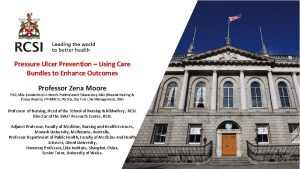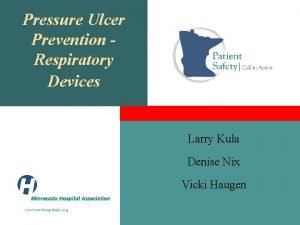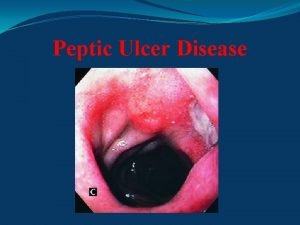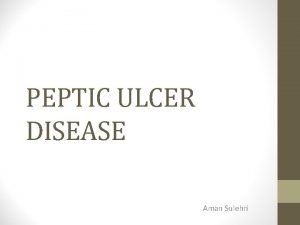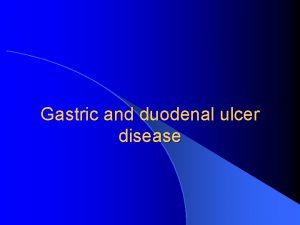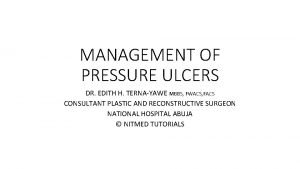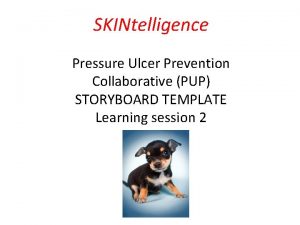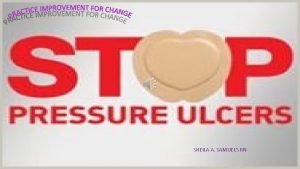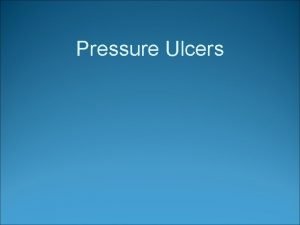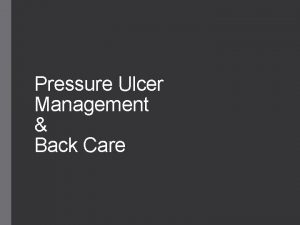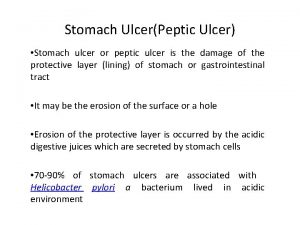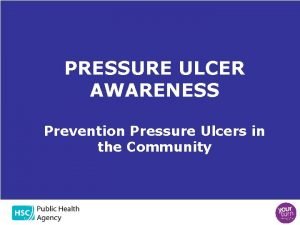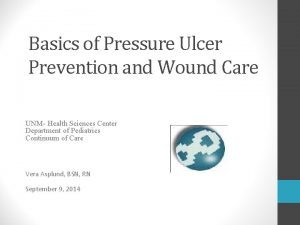Ascertaining pressure ulcer prevention practices in residential care











- Slides: 11

Ascertaining pressure ulcer prevention practices in residential care homes Janet Farline Clinical Quality Officer Sunderland Clinical Commissioning Group South Tyneside Clinical Commissioning Group City Hospitals Sunderland NHS Foundation Trust

Background • There is a lack of information in residential care home settings in Sunderland on: – Pressure ulcer identification practices – Staff training – Tools used in practice • Stakeholders across the City of Sunderland came together to address this issue to improve care through the PROACT project

Aim of study • To engage with Managers of care homes to current practices, perceived confidence levels, tools used and knowledge gaps to establish a baseline for the PROACT project

Methods • The rationale for PROACT was presented and discussed with care home managers prior to data collection to: – raise awareness / ensure buy-in for the project – Identify any issues/objections and address at outset • The link to the anonymous, on-line survey was emailed to all Managers of residential care homes (n=48) in June 2017 – Reminders were given via emails and face to face reminders

Methods • Data collected between June – December 2017 • 47 residential care home Managers were approached

Results • The survey elicited an 81% response rate (n=38) • 37% (n=14) had worked as a Manager for >12 yrs • 68% (n=32) stated their staff perceived prevention of pressure ulcers as an important aspect of care

Results • 50% (n=19) stated their staff were confident in identifying signs and symptoms of pressure ulcers in residents • Nearly half (n=15) reported time as the biggest constraint to staff engagement with training • Half (n=19) of the homes used the Waterlow tool

Results • 73%(n=27) stated that group education sessions and staff meetings were used to raise awareness of the need to identify signs and symptoms of pressure ulcers • 75% (n=28) reported between 1 -5 new admissions with pressure ulcer symptomology in the last 12 months

Discussion • Findings show gaps in: – staff knowledge – training practice and provision – Variance in identification tools across the residential care homes in the City

Recommendations • Need for standardised pressure ulcer tools to be implemented in residential care homes • Address mechanisms of addressing resource and pragmatic issues with staff engagement with training

Thank you
 Primary prevention secondary prevention tertiary prevention
Primary prevention secondary prevention tertiary prevention Sskin bundle hse
Sskin bundle hse Nasal cannula pressure ulcer prevention
Nasal cannula pressure ulcer prevention Duodenal ulcer vs gastric ulcer
Duodenal ulcer vs gastric ulcer Niche and notch in gastric ulcer meaning
Niche and notch in gastric ulcer meaning Duodenal ulcer anatomy
Duodenal ulcer anatomy Typhoid vs tuberculous ulcer
Typhoid vs tuberculous ulcer Types of gastric ulcer
Types of gastric ulcer Billroth ii anatomy
Billroth ii anatomy Bedsore grade
Bedsore grade Sskin bundle template
Sskin bundle template Pressure ulcer pico question
Pressure ulcer pico question

